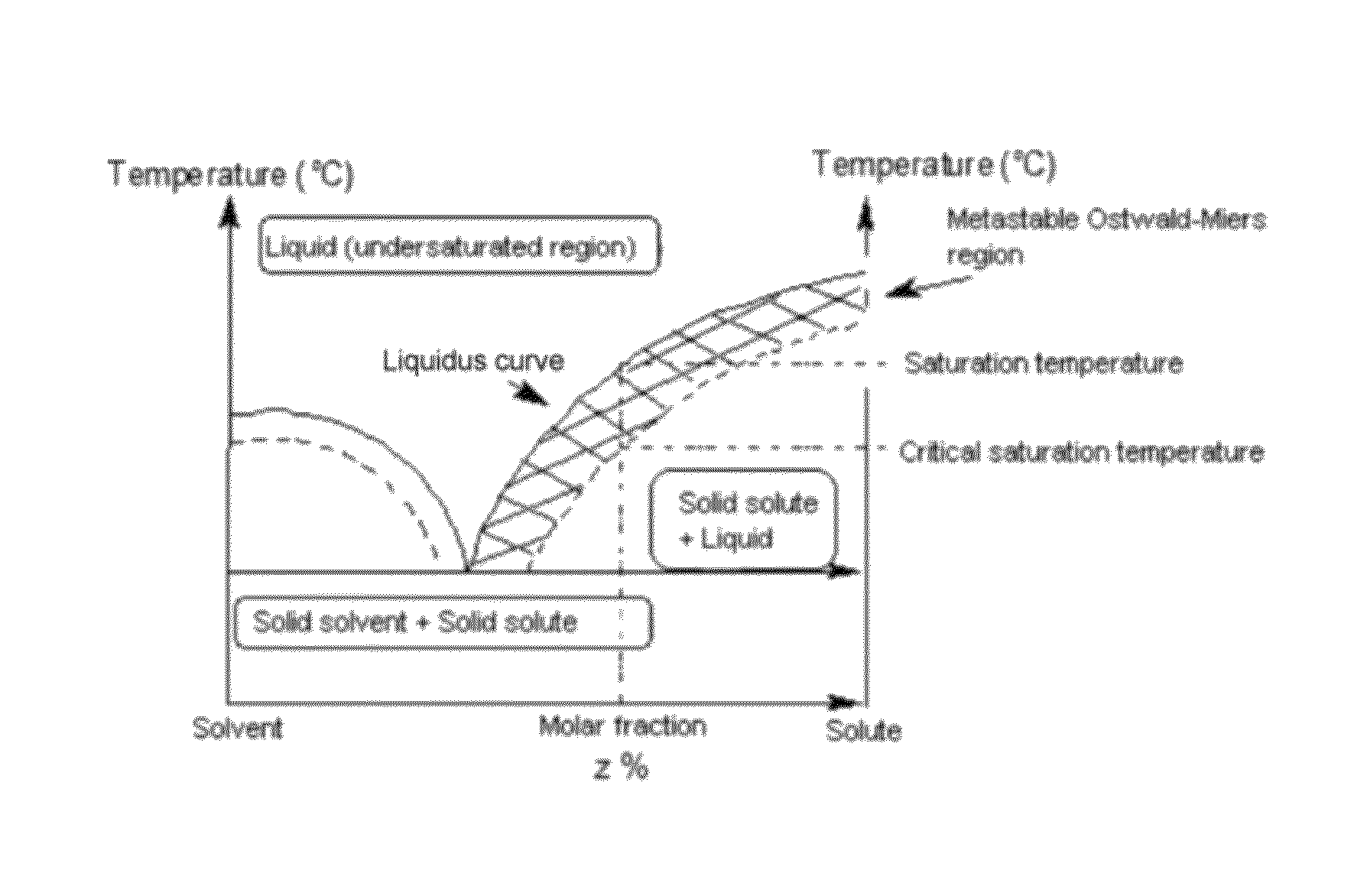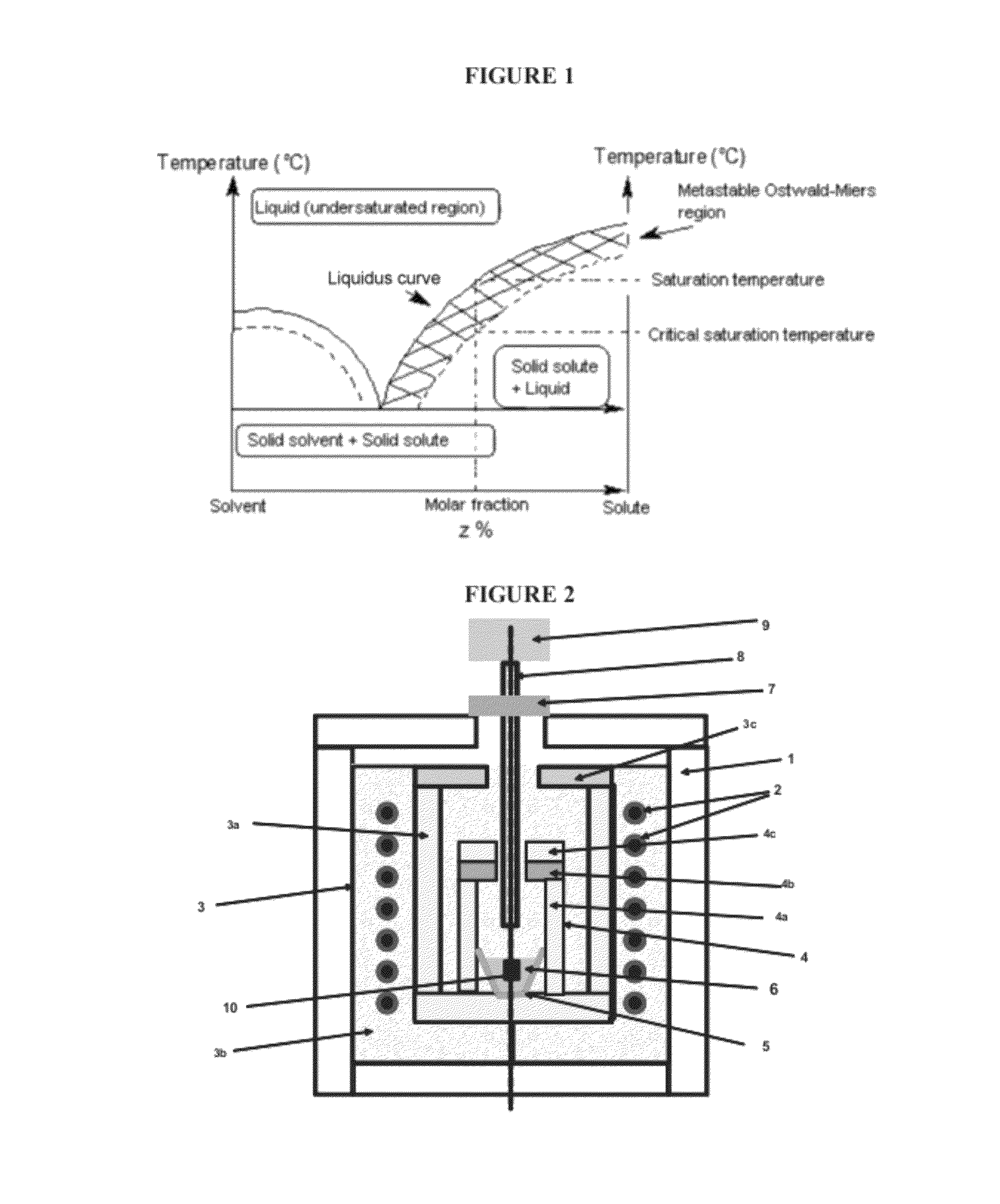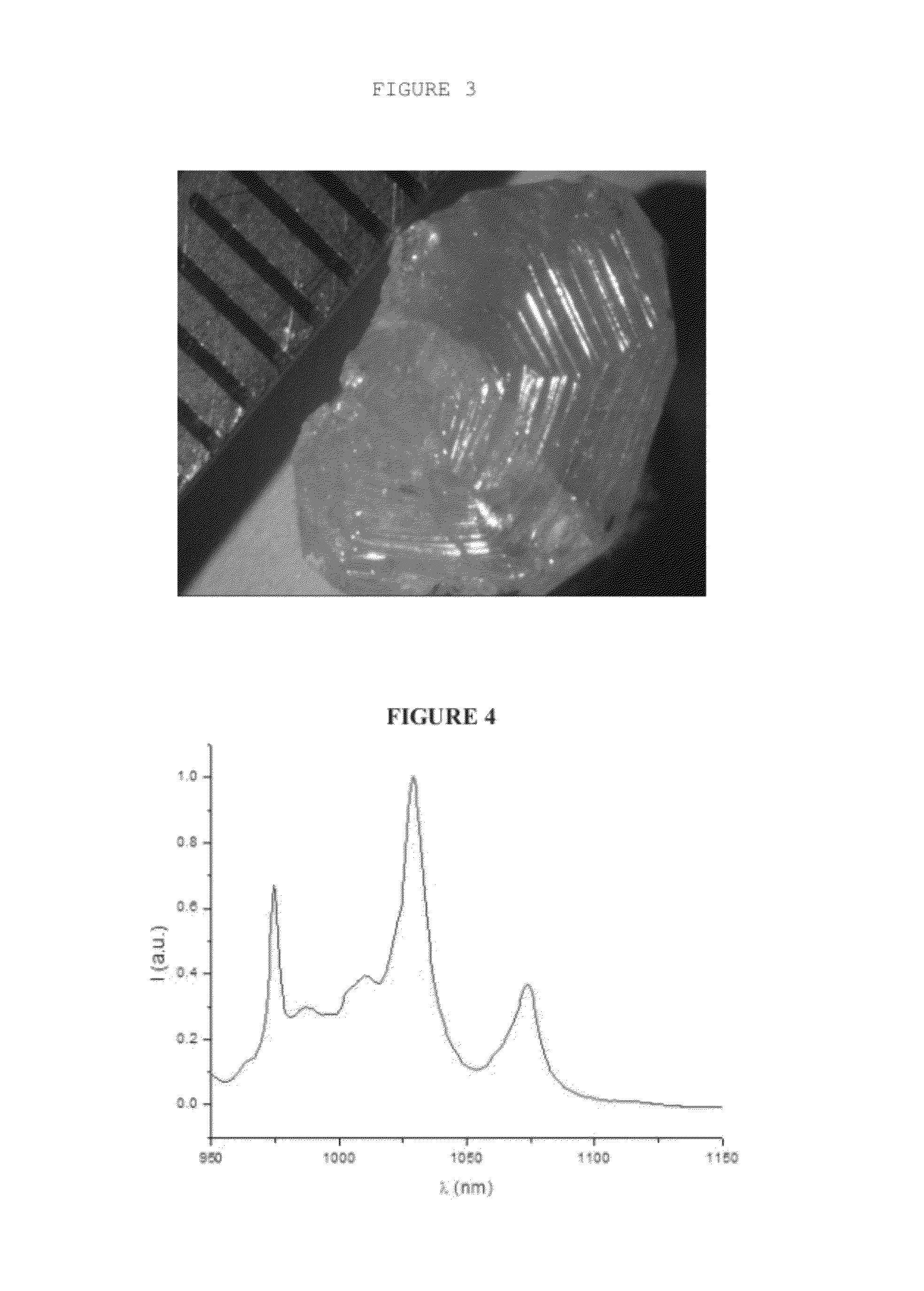Method for preparing single-crystal cubic sesquioxides and uses thereof
- Summary
- Abstract
- Description
- Claims
- Application Information
AI Technical Summary
Benefits of technology
Problems solved by technology
Method used
Image
Examples
example 1
Crystallogenesis of Y2O3 Single-Crystals 5% (Molar) Doped with Ytterbium
[0122]In this example, single-crystal cubic sesquioxides of yttrium doped with ytterbium: Y2O3:Yb3+, were prepared using [Li6(Y0.95Yb0.05)(BO3)3] as synthesis solvent.
[0123]1) First Stage: Preparation of a Solute Composed of a Mechanical Mixture of Yttrium Sesquioxide and Ytterbium Sesquioxide:
[0124]The solute was prepared by mechanically mixing 0.95 mol % of Y2O3 and 0.05 mol % of Yb2O3.
[0125]The commercial Y2O3 and Yb2O3 powders were mixed according to the stoichiometric proportions indicated above and then intimately ground in a mortar in order to obtain the finest particle size possible and the most homogeneous mechanical mixing possible.
[0126]2) Second Stage: Preparation of the Synthesis Solvent [Li6(Y0.95Yb0.05)(BO3)3]
[0127]The solvent was synthesized according to the following reaction 1:
6Li2CO3+6H3BO3+0.95Y2O3+0.05Yb2O3→2[Li6(Y0.95Yb0.05)(BO3)3]+9H2O+6CO3 (Reaction 1)
[0128]The commercial Li2CO3, H3BO3, ...
example 2
Crystallogenesis of Gd2O3 Sink-Crystals 5% (Molar) Doped with Ytterbium
[0155]In this example, single-crystal cubic sesquioxides of gadolinium doped with ytterbium: Gd2O3:Yb3+, were prepared using [Li6(Gd0.95Yb0.05)(BO3)3] as synthesis solvent.
[0156]1) First Stage: Preparation of a Solute Composed of a Mechanical Mixture of a Gadolinium Sesquioxide and of an Ytterbium Sesquioxide:
[0157]The solute was prepared by mechanically mixing 0.95 mol % of Gd2O3 and 0.05 mol % of Yb2O3.
[0158]The commercial Gd2O3 and Yb2O3 powders were mixed according to the stoichiometric proportions indicated above and then intimately ground in a mortar in order to obtain the finest particle size possible and the most homogeneous mechanical mixing possible.
[0159]2) Second Stage: Preparation of the Synthesis Solvent [Li6(Gd0.95Yb0.05)(BO3)3]
[0160]The solvent was synthesized according to the following reaction 2:
6Li2CO3+6H3BO3+0.95Gd2O3+0.05Yb2O3→2[Li6(Gd0.95Yb0.05)(BO3)3]9H2O+6CO2 (Reaction 2)
[0161]The commerc...
example 3
Crystallogenesis of Lu2O3 Single-Crystals, 5% (Molar) Doped with Ytterbium
[0184]In this example, single-crystal cubic sesquioxides of lutetium doped with ytterbium: Lu2O3:Yb3+, were prepared using [Li6(Lu0.95Yb0.05)(BO3)3] as synthesis solvent.
[0185]1) First Stage: Preparation of a Solute Composed of a Mixture of Lutetium Sesquioxide and Ytterbium Sesquioxide
[0186]The solute was prepared by mechanically mixing 0.95 mol % of Lu2O3 and 0.05 mol % of Yb2O3.
[0187]The commercial Lu2O3 and Yb2O3 powders were mixed according to the stoichiometric proportions indicated above and then intimately ground in a mortar in order to obtain the finest particle size possible and the most homogeneous mechanical mixing possible.
[0188]2) Second Stage: Preparation of the Synthesis Solvent [Li6(Lu0.95Yb0.05)(BO3)3]
[0189]The solvent was synthesized according to the following reaction 3:
6Li2CO3+6H3BO3+0.95Lu2O3+0.05Yb2O3→2[Li6(Lu0.95Yb0.05)(BO3)3]+9H2O+6CO2 (Reaction 3)
[0190]The commercial Li2CO3, H3BO3, L...
PUM
 Login to View More
Login to View More Abstract
Description
Claims
Application Information
 Login to View More
Login to View More - R&D
- Intellectual Property
- Life Sciences
- Materials
- Tech Scout
- Unparalleled Data Quality
- Higher Quality Content
- 60% Fewer Hallucinations
Browse by: Latest US Patents, China's latest patents, Technical Efficacy Thesaurus, Application Domain, Technology Topic, Popular Technical Reports.
© 2025 PatSnap. All rights reserved.Legal|Privacy policy|Modern Slavery Act Transparency Statement|Sitemap|About US| Contact US: help@patsnap.com



